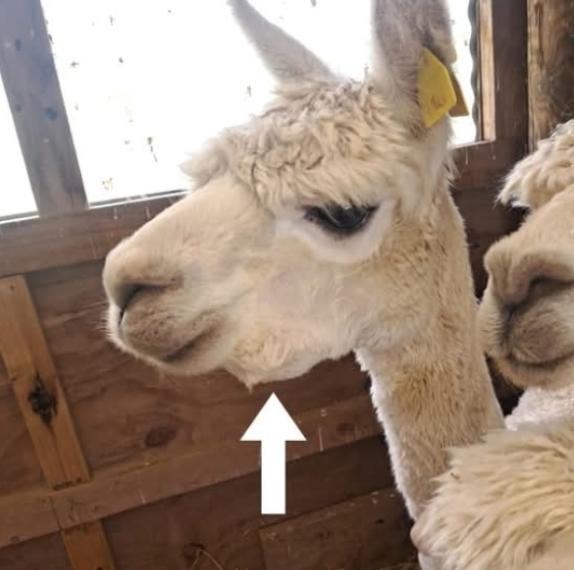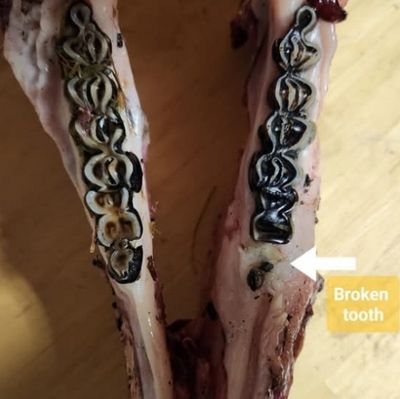
Farm Tours
We offer farm tours for smaller groups and families to meet, feed, interact with and walk with our alpacas.
For full details and to book your experience of these wonderful animals, please go to our reservation form.
Below are various items written by me and other alpaca owners for newsletters. I will load more as time permits.
I hope that the reader finds them interesting.
The unpacking season is always exciting, the culmination of a year’s efforts, not only for the dams concerned. What will the mating choices made all those months ago result in? Will the crias carry the desired qualities in their fleeces, temperaments, and even their health traits? Much of this is revealed in the final act of the pregnancy - birthing.
Unpacking normally happens without incident which is fortunate as it often starts without warning and the first an owner knows is that there is an extra head in the paddock, or in the case of one of our crias this year, in a dry stream bed! There is, however, quite some variation in the process. On our farm, we have had a dam go into labour and by the time I had fetched the birthing kit, the cria was on the ground. Another dam paused labour for half an hour with the cria dangling, ate lunch, and then expelled the cria like a champagne cork, whilst another slightly overweight dam took almost three hours. The challenge for an alpaca owner is identifying when things are actually going pear-shaped during unpacking. In my early days of breeding, I have to admit to making a number of calls to fellow breeders for reassurance when a dam deviated from a ‘textbook delivery’ - their range catching me out. In all cases though, a healthy cria resulted and the dam’s and my blood pressure returned to normal.
This year, we had our first real problem. Illini was spotted in the first stage of labour in one corner of the nursery paddock. She showed the typical symptoms of frequently going to the poo-midden without much effect, humming and behaving in an atypical way for her. It was her fourth cria so we did not expect her to have any difficulty in birthing so I wandered back to the house to collect the birthing kit, half expecting to find a cria on the ground by the time I got back. On my return, I found the cria’s head and one forelimb dangling so I sat down a little way from her and waited for the second leg to appear. What I saw when Illini strained was the cria emerging further, but when the contraction finished it slipped back inwards and there was no sign of the second leg. This was clearly wrong so I contacted the vet. Most alpaca owners will agree that issues only occur ‘out-of-hours’ and so it was here. It took a few minutes for the vet to call back and almost his first question was, “Is the cria still alive?”. I told him “Yes!” and he departed right away. The cria was certainly alive, grunting and snorting as he/she dangled.

The vet arrived and we were quickly in the paddock where a quick examination showed that Illini had made no progress. Although the vet had assisted a number of lambs in the same situation, this was his first alpaca. But with plenty of lubrication and some manipulation, the cria was extracted quickly and lay on the ground recovering. Alpacas seem to know when they are in trouble and Illini’s behaviour was perfect - I barely had to hold her.
After a brilliant job, the vet departed and Illini passed the placenta an hour later. Although the cria wriggled on the ground, he was very slow to kush as he seemed exhausted by the difficult labour. A small bottle of glucose solution (guzzled down!) followed by colostrum fixed this, but it did take him several hours to recover. The photo taken two days later shows ‘Mocca’ in the foreground - a big and very bouncy boy, along with a paddock-mate, Kamal. If there is anything to be learned here, it’s probably that owners should try to be present during unpacking. Birthing difficulties cannot be predicted and as told here, human intervention can save the day, for both dam and cria.
Going back to the slightly overweight dam that took almost three hours to birth, she was so exhausted by the protracted labour that she was completely confused and promptly sat on her cria. This too could have ended badly but I was there to make her immediately stand up and keep watch on both until she recovered.
To conclude, the unpacking season should be a reminder of the unpredictability of a successful delivery. Each new cria is not only the result of careful planning but a result of quick thinking in those moments when things don't go according to plan.
If there is only one article here that you read and act on, I hope it is this one. Facial eczema is a very serious but avoidable disease that affects sheep, cattle, goats and especially llamas and alpacas. It is especially prevalent in New Zealand but also known in other countries. Alpacas should have a healthy lifespan of 15-20 years so preventing them from being affected by FE is vital.
The facial eczema season starts in early January. The disease is caused by a toxin contained in the spores of a fungus that grows on dead grass in the paddocks. Growth begins after several days of warm humid weather with night time temperatures of over 13°C, especially with rain, heavy dews or high relative humidity. The fungus can then start growing and producing spores on the ground-level decaying grass leaves.
When eaten by animals, the spores release their toxin into the gut which causes severe liver and bile duct damage. Eventually this leads to an irritating photo-sensitization of the skin which the animal tries to relieve by persistent rubbing of its head against objects (e.g. fences, trees). This causes swelling and peeling of the skin, especially around the eyes and on the jaw and ears. They may also show restlessness, urinate frequently, shake, have drooping ears and swollen eyes and seek shade to avoid sunlight. Unfortunately, by the time these symptoms are seen, damage to the liver has already happened.
Veterinary assistance is absolutely essential in treating affected animals.
Counting spore numbers is a reasonable indicator of how toxic the grass in a paddock would be if eaten. There are many commercial and local veterinary services available for doing spore counts and they will explain how you should take the samples. The bagged grass samples are returned to them for sending on to the testing laboratory. Local area spore counts may be available at feed stores and vet practices. Aggregated counts for areas nationwide can be viewed on the Gribbles Veterinary website during the FE season. The graphs shown are real-time and indicate when the spore counts are climbing.
Counts in excess of 30,000 spores/g sample are regarded as hazardous to all stock. The peak of the spore counts is usually in March/April though the magnitude and exact timing will vary with seasonal conditions.
It should be noted that spore counts are highly variable between farms in the same vicinity, between paddocks at the same farm and even within a paddock. Effectively, this means that local spore counts can be taken as a guide but alpaca owners must carefully time their protective measures to ensure the health of their animals.
Even if you are unable to take spore count samples, it may be assumed that the FE season starts early in the New Year on the North Island and your preventative measures should have already started.
We were recently called to examine Halo, an 11 year old Suri alpaca who had developed a swelling on her face. Halo was otherwise well, still eating and behaving normally amongst her herd mates. She was about six-weeks pregnant and in good body condition. Facial swellings are often caused by serious and painful underlying conditions, so we went to see her the following day to see what was going on.

Halo's swelling was along her lower jaw and measured about 8cm long and 3cm wide. The swelling was firm and painful to the touch. She also had a swollen lymph node under her jaw on the same side as the main swelling. Lymph nodes are glands which are located all over the body and form part of the immune system. A lymph node will usually become enlarged when there is an infection nearby which the body is trying to deal with.
So what was Halo dealing with? Tooth root abscesses are a common problem in alpacas. Dental problems such as overgrown teeth, broken teeth or poor jaw alignment allow bacteria to gain entry through damaged gums and settle around the tooth roots, and an abscess can develop. Dental abscesses are very difficult to treat. Initially they require anaesthesia and X-rays to find out exactly what the problem is, and dental surgery is necessary if the problem is fixable. Simply treating an animal with a prolonged course of antibiotics doesn't work because the infected tooth roots themselves need to be extracted to allow the infection to heal. And clearly, leaving an animal to suffer through what is a very painful condition is also not an option.So for Halo, there were only 2 options - referral for further investigation and surgery, or euthanasia.
While referral for surgery was an option, the prolonged period of pain and stress that Halo would experience, along with significant cost, loss of her pregnancy and the previous experience of the owners, meant that euthanasia was chosen for Halo. Following euthanasia, an educational post-mortem was undertaken to understand why Halo had developed a tooth root abscess, and the owners kindly agreed for me to share the images.

On the side of her jaw, above where the swelling was, her first chewing tooth was broken into 3 pieces. This may have happened from accidentally chewing on a stone or from a kick to the face.
Within the jaw swelling was a large amount of pus, as well as many fragments of broken tooth root. The swelling itself was comprised of a lot of soft new bone, which is the body's attempt to heal the damaged jaw.

The last image clearly show the extent of the damage to her jaw bone, with large tracts present where the jaw bone had been eaten away by infection.
While this case was a very unfortunate outcome for Halo, she has provided us with a great learning opportunity and demonstrates clearly how serious dental disease is in alpacas. If you have an alpaca which is showing signs of swelling on its face, get them examined as soon as possible.
Detailed information can be found in these subject areas.